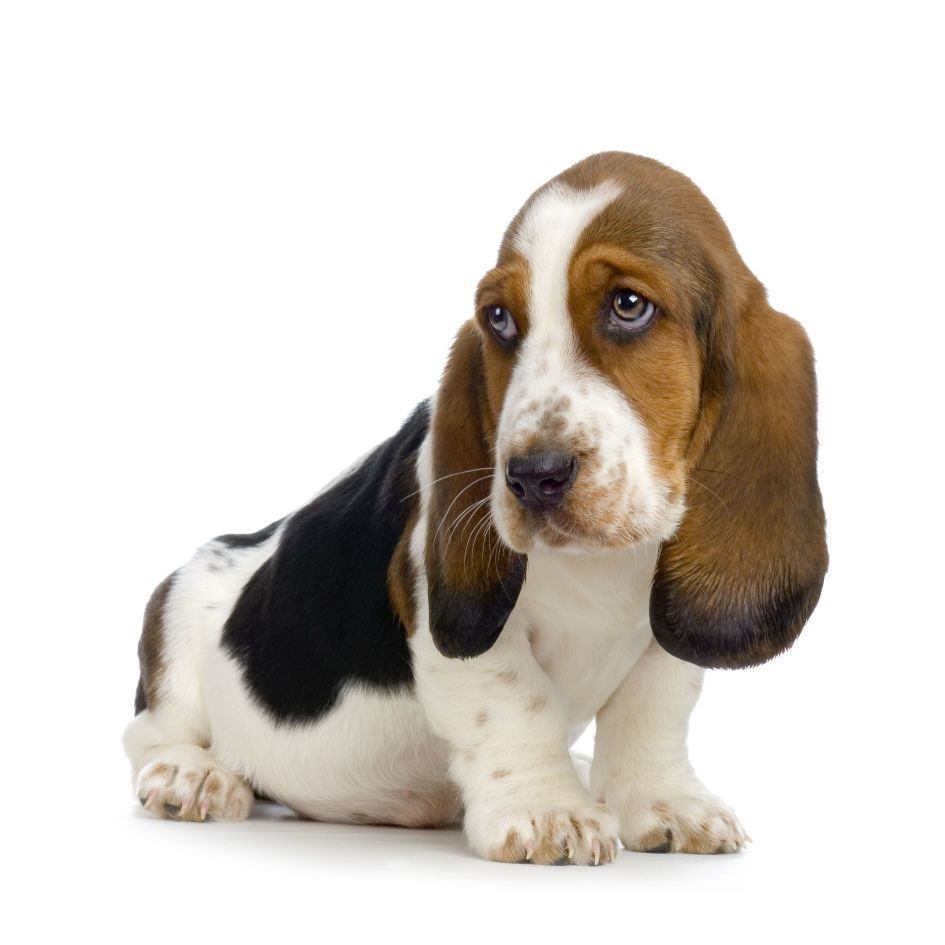Although they don’t have long flowing hair that requires daily brushing to eliminate mats and tangles, a Basset Hound still needs regular brushing—especially when he is shedding (which for some Bassets may seem like a year-round event). You should brush your Basset once a week. Regular brushing will not only contribute to the health of the skin and coat, because it distributes the natural oils through the coat, but it will help diminish shedding problems.
Instead of the usual slicker or pin brushes used on coated breeds, a shedding blade, grooming mitt, or coarse washcloth will work wonders on your Basset’s coat, keeping him glossy, shiny, and healthy looking. Using your grooming mitt or washcloth, start at the head and work your way back, brushing with the hair of your dog.
Shedding
Bassets seem to shed more than some other breeds, but through proper grooming and nutrition, you can do a lot to keep down the amount of loose hair you’ll find in your home and on your clothes. In addition to the need to pull out dead hair using a shedding blade or other shedding tool for short dense coats, you should always keep your Basset on a nutritionally sound diet.
Shedding is controlled by hormonal changes that most researchers believe are tied to photoperiod (length of natural light in a day), as well as to the level of nutrition received on a regular basis and the dog’s general state of health. All breeds go through a biennial shedding, and dogs may lose hair after being under anesthesia for X-rays or surgery, or after having puppies.
Brushing and rubbing your dog using the proper tools not only will help eliminate dead hair that would have eventually ended up on your carpet or wool blazer, but will keep his skin soft, supple, and healthy.
Skin Care
A dog cannot be considered “well groomed” unless he has healthy skin. Grooming is essential for healthy skin, not only for keeping it clean and massaging it to bring out the skin’s natural oils, but for allowing you to check for any skin problems that may he developing. If you notice any anomalies of the skin during your grooming session, alert your veterinarian immediately. A dull coat combined with dry itchy, or sore skin can be a symptom of disease. A malfunctioning thyroid, for example, can quickly take your Basset from being a poster boy to looking like a haggard stray.
Check for Fleas
You also should use your grooming time to look for external parasites that your dog may have picked up on a foray into the great outdoors. Many Bassets are prone to flea allergies, which not only can cause mild to severe discomfort, but can create a staphylococcus infection that can be quite difficult to eliminate. Finding the problem quickly (daily checks are imperative during flea season), getting rid of the fleas efficiently, and treating any resulting irritation or infection correctly can help keep your dog’s skin and coat in perfect condition.
Not only can flea allergies and the resulting infections be hard on your dog’s skin and coat, but they also can be quite a bit of damage to your wallet, since the antibiotics necessary to combat infections of the skin are expensive. Don’t depend on your naked eye to find fleas when you’re grooming.
Use a fine-tooth comb or a flea comb made specifically for this purpose. If you don’t find any live fleas, but are finding tiny black grains of dirt, your dog does indeed have fleas. The black specks aren’t dirt (or eggs as some people believe) but are dried flea feces. If you moisten them, you’ll see the redness as the dried blood in the feces becomes hydrated. If you’re shampooing your dog, and the water has a pink tinge, that’s the reason.
You should either use a shampoo designed to kill fleas or follow a bath with a flea dip. Once the immediate problem has been taken care of, ask your vet what once-a-month flea preventative they suggest for your area. Remember, no dog who has fleas is going to have healthy skin, and unhealthy skin cannot grow a healthy coat.

